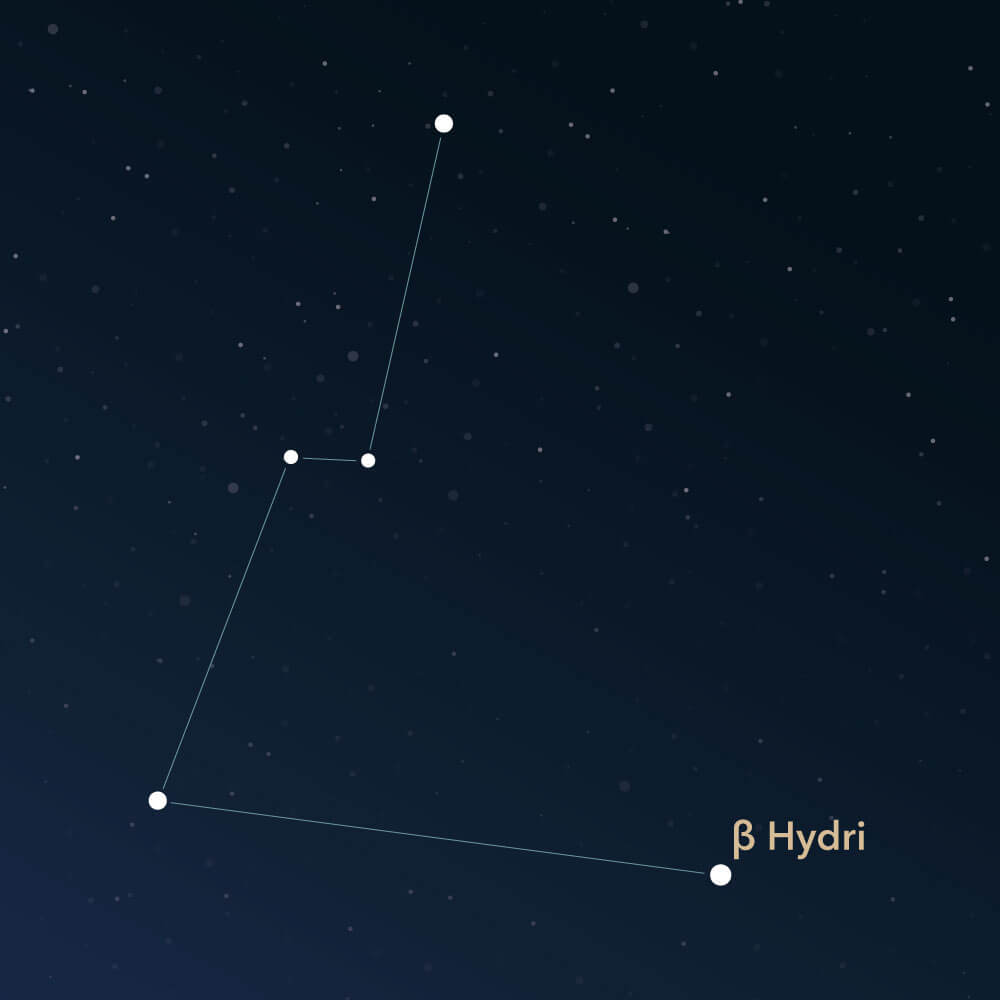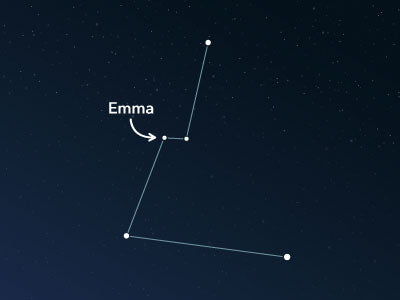The constellation Hydrus
Characteristics
- Other names / Symbolism
- Water Snake
- Hemisphere
- Southern hemisphere
- Visibility
- All year round
- Area
- 243 deg²
- Brightest star
- β Hydri (HIP number 2021)
- Specialties
- None

The Hydrus symbolizes a small water snake and is an unremarkable constellation in the southern sky. It lies in an area where no particularly prominent objects or stars are visible.
Hemisphere, visibility, and area
The constellation is located near the south celestial pole and is, therefore, not visible everywhere. It can be observed from all locations south of the equator. However, in the north, it is only visible up to 8° north latitude. This corresponds to regions such as southern Panama, northern Sri Lanka, or Phuket in Thailand.
In most regions south of the equator, the Hydrus is circumpolar, meaning it is visible all year round. The further north you go, the less visible it becomes. The best months to observe the constellation then are from September to November.
It has an area of approximately 243 square degrees, making it the 61st largest out of all 88 constellations.
There are different visualizations of the Hydrus. In some, only the three main stars are connected to form a triangle that is open on one side. In other depictions, three other stars are added, creating a long chain of stars that reflects the shape of the snake.
The brightest star in Hydrus is β Hydri (Beta Hydri), representing the snake's head. It has an apparent magnitude of about 2.8 and is estimated to be 6.4 billion years old. Its distance from earth is approximately 24 light-years.
The inconspicuous shape and faint stars make it difficult to find the Hydrus in the night sky. Adjacent constellations can serve as orientation. In the north, the extensive Eridanus borders on it. Its exceptionally bright star Achernar is right on edge with the Hydrus. Other neighbors are the constellations of Tucana, Octans, Mensa, and Dorado. The Reticulum and Horologium are also in the immediate vicinity.
Specialties in the constellation
There are no exciting deep-sky objects in the area of the Hydrus that invite observation.
However, neighboring constellations include two very interesting Magellanic Clouds, which offer several open star clusters, globular clusters, and various nebulae.
The Small Magellanic Cloud is right on the border of the Tucana. The Large Magellanic Cloud, on the other hand, lies in the area of the Dorado and Mensa constellations.

History
At the end of the 15th century, a Dutch fleet set sail for the legendary Spice Islands intending to establish new trade relations. On their way, the crew was assigned another important task.
The Dutch astronomer Peter Plancius commissioned them to collect more accurate data on the stars. In this context, cartographer Frederick de Houtman and navigator Pieter Dierkzoon measured the positions of 135 stars. They then defined 12 new constellations.
The present-day Hydrus was initially introduced as "De Waterslang" (The Water Snake). Their inspiration was the numerous sea snakes they observed off the coasts in tropical regions.
Peter Plancius later included the constellation in his celestial maps. Several years later, Johann Bayer finally introduced the constellation under its commonly known Latin name, Hydrus.
PublishedRead more interesting articles

An overview of all 88 constellations
Learn more about all 88 constellations and read interesting information about the mythology, visibility, and features.

Planetarium App
Discover the night sky with our planetarium app!
Available for iOS and Android.

Name a star in the constellation Hydrus
Name a star in a constellation and create something that lasts for eternity.